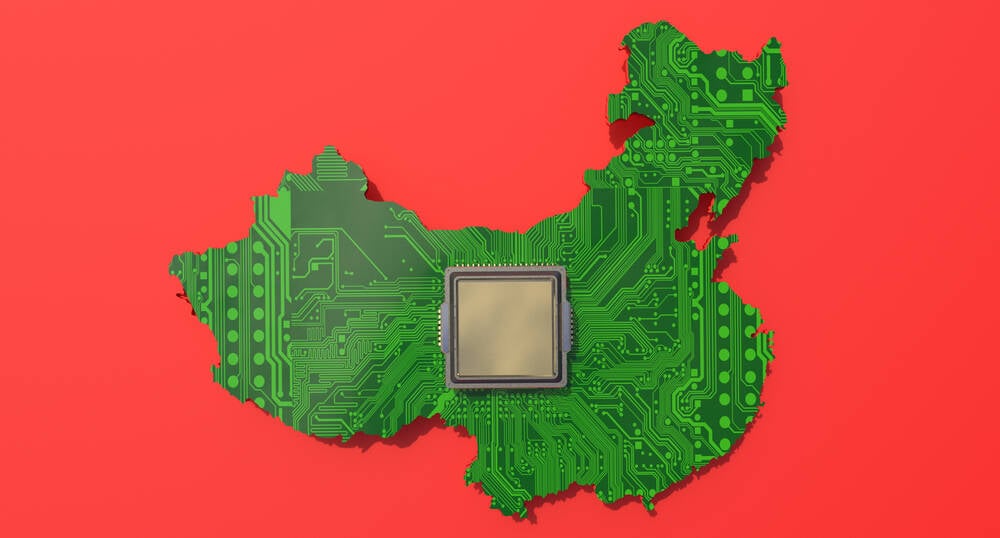China Shops Around US Bans To Power Its Nuclear Weapons Research Program

The Chinese agency responsible for developing and maintaining nuclear weapons has reportedly been powered by Intel and Nvidia silicon for at least two years, despite spending over a quarter of a century under a trade ban meant to prevent their use by foreign militaries.
According to the Wall Street Journal, the state-backed China's Academy of Engineering Physics CAEP) has likely used back channels and shell companies to obtain US chips for use in nuclear weapons simulations and other applications.
The CAEP shares much in common with the US Department of Energy. Both agencies are tasked with the development and maintenance of the nation's strategic weapons stockpile. Since underground nuclear weapons tests were banned in 1996, such work has often been done with supercomputers designed to simulate various aspects of nuclear weapons' testing.
In an effort to prevent the use of US chips for military applications in 1997 the US added the CAEP to the Commerce Department's Entity List of organizations that aren't allowed to import certain technologies. However, as the WSJ investigation found, these efforts appear to have done little to stop Chinese agencies with ties to the military obtaining US-made chips.
The Journal uncovered more than 30 papers published by CAEP researchers that made use of American semiconductors, including several with direct military applications.
The findings underscore just how ineffective the US Commerce Department's measures have been and builds on a WSJ investigation from last year that found that the US approved 94 percent of licenses required to export restricted goods to China.
- Chipmakers cripple products to dodge US China ban
- US bars Nvidia and AMD from selling AI-centric accelerators to China and Russia
- Biden cuts off China's Yangtze, 30 others from US chipmaking gear
- The trade ban that wasn't: US allows 94% of restricted tech exports to China anyway
Part of the problem is the US export bans only restrict the sale of goods to specific entities — usually those with ties to foreign militaries. As highlighted in the WSJ report, many of these goods are widely available in servers and PCs sold in the Chinese market.
This creates an opportunity for shell companies owned by the Chinese government to subvert US export bans. And while the US Commerce Department has worked to shutout shell companies as soon as it finds them, we imagine it's a bit like Whac-A-Mole, but with mushroom-cloud consequences.
Making matters more complicated, many gaming-focusing graphics cards share the GPU die used in chipmaker's datacenter products. For example, the GTX 1080 TI, one of the GPUs used for CAEP research, shares the same die as Nvidia's datacenter focused Tesla P40, albeit with minor differences like memory, clocks and shader counts.
The same is true today, with Nvidia's RTX 4090 sharing the same GPU die — the AD102 — as its L40 accelerator. And while the WSJ didn't find any evidence to suggest the Chinese had acquired current-generation chips in the past two years, there's no reason to think they won't.
In fact, recent changes by the US Commerce Department could incentivize agencies like CAEP to do just that. Over the past two years, the US has ramped up efforts to cripple China's domestic semiconductor industry, while leaning on US-held patents and licenses to prevent Chinese chipmakers from producing chips in Taiwanese and Korean fabs.
In October, the Department revised its entity list, adding more than two dozen Chinese firms and imposing more generalized restrictions of AI chips and accelerators, including Nvidia's A100 and AMD's Instinct MI250, to China. The measures reportedly caused problems for Chinese GPU vendor Biren, which relies on TSMC for manufacturing.
The chip startup quickly retooled its design, capping the chip's transfer rate to 576GBps, down from 640GBps to avoid scrutiny. Nvidia employed a similar strategy to get around US export bans, rereleasing its A100 as the A800 with a narrower memory bus.
It's also worth noting that while CAEP has long held a place on the US Entity List, the same hasn't been true of many Chinese supercomputing centers. The National Supercomputing Center in Guangzhou province, home to the number 10-ranked TianHe-2 supercomputer on the Top500 ranking, was only added to the Entities list in 2015. The decision came after the US became aware the Intel-based system has been used in "nuclear activities."
The US Commerce Department in 2021 added a slew of other Chinese supercomputing centers to the Entity List over suspicious the systems were being used by China's military actors to support military modernization efforts and nuclear weapons programs. ®
From Chip War To Cloud War: The Next Frontier In Global Tech Competition
The global chip war, characterized by intense competition among nations and corporations for supremacy in semiconductor ... Read more
The High Stakes Of Tech Regulation: Security Risks And Market Dynamics
The influence of tech giants in the global economy continues to grow, raising crucial questions about how to balance sec... Read more
The Tyranny Of Instagram Interiors: Why It's Time To Break Free From Algorithm-Driven Aesthetics
Instagram has become a dominant force in shaping interior design trends, offering a seemingly endless stream of inspirat... Read more
The Data Crunch In AI: Strategies For Sustainability
Exploring solutions to the imminent exhaustion of internet data for AI training.As the artificial intelligence (AI) indu... Read more
Google Abandons Four-Year Effort To Remove Cookies From Chrome Browser
After four years of dedicated effort, Google has decided to abandon its plan to remove third-party cookies from its Chro... Read more
LinkedIn Embraces AI And Gamification To Drive User Engagement And Revenue
In an effort to tackle slowing revenue growth and enhance user engagement, LinkedIn is turning to artificial intelligenc... Read more

